The WPJ
THE WORLD PROPERTY JOURNALReal Estate Facts Not Fiction
Residential Real Estate News

New Construction Shortage in U.S. Will to Persist Until 2022
Residential News » Seattle Edition | By WPJ Staff | September 11, 2019 8:13 AM ET
According to Zillow polling results from U.S. economists and real estate experts, while home values have recovered since the Great Recession and, in many cases, surpassed their pre-recession peaks, single-family home construction activity has continued to languish. The rate of new housing starts will likely remain below historic averages until 2022 or later.
The for-sale market has experienced persistently low inventory over the past few years. A continued low rate of new construction would likely keep demand high for the relatively limited single-family homes that are available and keep many in the rental market for longer, putting price pressure on both the for-sale and rental housing markets.
Zillow Survey Highlights Include:
The Zillow Home Price Expectations Survey, sponsored by Zillow and conducted quarterly by Pulsenomics LLC, asks more than 100 economists, investment strategists and real estate experts for their predictions about the U.S. housing market. The Q3 survey also asked panelists about their expectations for new construction activity.
Historically, single-family housing starts have averaged more than 1 million units a month and reached heights of more than 1.8 million in 2006 before plummeting during the Great Recession. Activity has picked back up since then, but has yet to again reach the historic average.
A slight majority of panelists expect the level of new single-family construction will remain below 1 million units until 2022 or later, with the most pessimistic projections pushing this off until 2029. One in five think that threshold will be reached by the end of next year, and a quarter are targeting 2021.
Zillow research indicates that the rate of U.S. home construction has lagged behind what would typically be expected given the rate of population growth over the past decade. Issues such as scarce land, a worker shortage and high costs for permits and materials have plagued builders in recent years, making it increasingly difficult to profitably build large numbers of homes - especially at price points accessible to low- and middle-income home buyers.
"The American housing landscape was shaped in a big way by the drive for the classic American dream; swaths of cities were set aside solely for single-family, detached homes, with big minimum lot sizes and slow local review processes. Jump ahead three decades and housing affordability is a major issue across the country," said Zillow Director of Economic Research Skylar Olsen. "Those same practices now arguably limit the ability of the next generation to become homeowners. Without new homes to meet population growth and replace an aging housing stock, home buying is expected to move further out of reach. The most-popular solutions among experts all ultimately suggest rolling back these rules to increase flexibility and get more projects through the process faster."
When asked their opinion on actions that would most effectively increase the supply of single-family housing, the panelists expressed the strongest preference for relaxing local review regulations for projects of a certain size - 56% of respondents included this option among their three most-preferred. Reducing mandatory minimum lot sizes (38% of respondents) and easing the land subdivision process for landowners (38%) were the next most commonly chosen.
Builders' eagerness to increase activity is tied closely to their expectation of future home value growth. Panelists have lowered their growth projections since this time last year. On average, panelists expect home values to grow 3.6% in 2019, then slow to 2.5% in 2020 and 2.2% in 2021, before picking back up to 2.6% in 2022. As of July, home values were growing at a 5.2% annual pace.
"Overall, the outlook for U.S. home prices remains positive in both nominal and inflation-adjusted terms. But it continues to soften, despite diminished mortgage rates and a low supply of entry-level homes," said Pulsenomics Founder Terry Loebs. "Appreciation expected through 2023 has fallen to an average annual rate of 2.9 percent - the most subdued five-year panel-wide projection in the past seven years - and experts who believe there is downside risk to their forecast outnumber those who see upside by a ratio of more than four-to-one."
The average panel-wide projections mask significant differences of opinion among individual experts who participated in the survey. For example, the most optimistic quartile of panelists expects home values to appreciate at an average annual rate of 4.8 percent through 2023, while the least-confident group projects an average yearly increase of 0.8 percent. Pulsenomics estimates that the difference between those scenarios would amount to $6.5 trillion in national housing wealth. "Such stark differences in the medium-term housing outlook underscore the challenge of assessing the net impact of demographic shifts, market volatility, and supply-demand imbalances lingering in the long wake of the U.S. housing crisis," Loebs said.
The for-sale market has experienced persistently low inventory over the past few years. A continued low rate of new construction would likely keep demand high for the relatively limited single-family homes that are available and keep many in the rental market for longer, putting price pressure on both the for-sale and rental housing markets.
Zillow Survey Highlights Include:
- The rate of new single-family construction in the U.S. has yet to recover to historic norms following its collapse during the Great Recession.
- A majority of economists and real estate experts surveyed by Pulsenomics and Zillow expect new single-family construction to remain below a 1 million-unit annual pace until 2022 or later.
- The most popular ways to potentially increase supply are relaxing local review regulations for projects of a certain size, reducing mandatory minimum lot sizes and easing the land subdivision process.
- On average, panelists expect home values to grow 3.6% in 2019, down from 4.2% expected growth when surveyed a year ago.
The Zillow Home Price Expectations Survey, sponsored by Zillow and conducted quarterly by Pulsenomics LLC, asks more than 100 economists, investment strategists and real estate experts for their predictions about the U.S. housing market. The Q3 survey also asked panelists about their expectations for new construction activity.
Historically, single-family housing starts have averaged more than 1 million units a month and reached heights of more than 1.8 million in 2006 before plummeting during the Great Recession. Activity has picked back up since then, but has yet to again reach the historic average.
A slight majority of panelists expect the level of new single-family construction will remain below 1 million units until 2022 or later, with the most pessimistic projections pushing this off until 2029. One in five think that threshold will be reached by the end of next year, and a quarter are targeting 2021.
Zillow research indicates that the rate of U.S. home construction has lagged behind what would typically be expected given the rate of population growth over the past decade. Issues such as scarce land, a worker shortage and high costs for permits and materials have plagued builders in recent years, making it increasingly difficult to profitably build large numbers of homes - especially at price points accessible to low- and middle-income home buyers.
"The American housing landscape was shaped in a big way by the drive for the classic American dream; swaths of cities were set aside solely for single-family, detached homes, with big minimum lot sizes and slow local review processes. Jump ahead three decades and housing affordability is a major issue across the country," said Zillow Director of Economic Research Skylar Olsen. "Those same practices now arguably limit the ability of the next generation to become homeowners. Without new homes to meet population growth and replace an aging housing stock, home buying is expected to move further out of reach. The most-popular solutions among experts all ultimately suggest rolling back these rules to increase flexibility and get more projects through the process faster."
When asked their opinion on actions that would most effectively increase the supply of single-family housing, the panelists expressed the strongest preference for relaxing local review regulations for projects of a certain size - 56% of respondents included this option among their three most-preferred. Reducing mandatory minimum lot sizes (38% of respondents) and easing the land subdivision process for landowners (38%) were the next most commonly chosen.
Builders' eagerness to increase activity is tied closely to their expectation of future home value growth. Panelists have lowered their growth projections since this time last year. On average, panelists expect home values to grow 3.6% in 2019, then slow to 2.5% in 2020 and 2.2% in 2021, before picking back up to 2.6% in 2022. As of July, home values were growing at a 5.2% annual pace.
"Overall, the outlook for U.S. home prices remains positive in both nominal and inflation-adjusted terms. But it continues to soften, despite diminished mortgage rates and a low supply of entry-level homes," said Pulsenomics Founder Terry Loebs. "Appreciation expected through 2023 has fallen to an average annual rate of 2.9 percent - the most subdued five-year panel-wide projection in the past seven years - and experts who believe there is downside risk to their forecast outnumber those who see upside by a ratio of more than four-to-one."
The average panel-wide projections mask significant differences of opinion among individual experts who participated in the survey. For example, the most optimistic quartile of panelists expects home values to appreciate at an average annual rate of 4.8 percent through 2023, while the least-confident group projects an average yearly increase of 0.8 percent. Pulsenomics estimates that the difference between those scenarios would amount to $6.5 trillion in national housing wealth. "Such stark differences in the medium-term housing outlook underscore the challenge of assessing the net impact of demographic shifts, market volatility, and supply-demand imbalances lingering in the long wake of the U.S. housing crisis," Loebs said.
Sign Up Free | The WPJ Weekly Newsletter
Relevant real estate news.
Actionable market intelligence.
Right to your inbox every week.
Real Estate Listings Showcase

$350
Home For Rent
Lake Arrowhead, California
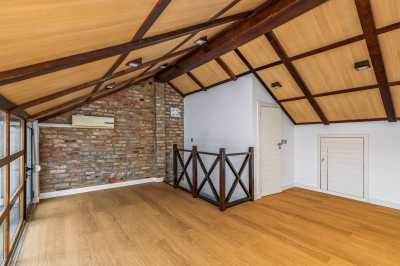
€800,000
Apartment For Sale
Lisboa, Portugal

$1,475,000
Townhome For Sale
Phoenix, Arizona

$1,400,000
Vacation Villas For Sale
Lowlands, Trinidad and Tobago
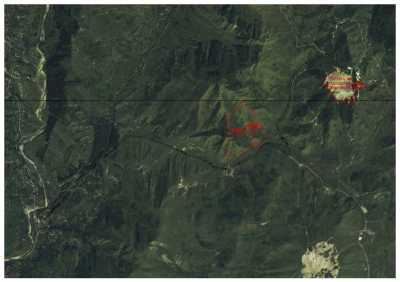
€1,600,000
Residential Land For Sale
Scortoasa, Romania

$2,500,000
Mixed-Use Land For Sale
Von Ormy, Texas
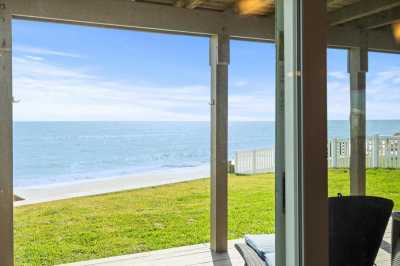
$1,375,000
Home For Sale
Flagler Beach, Florida
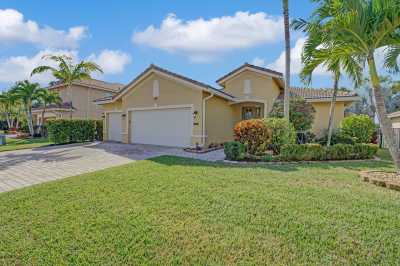
$740,000
Home For Sale
West Palm Beach, Florida

$2,495,000
Condo For Sale
Boca Raton, Florida

$795,000
Home For Sale
Cuenca, Ecuador

$750,000
Mixed Use For Sale
Corozal, Belize
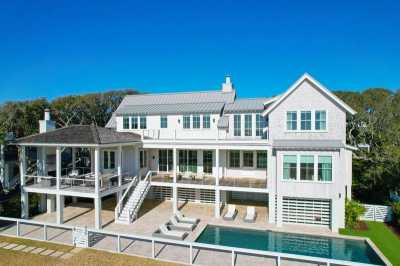
$8,195,000
Home For Sale
Isle of Palms, South Carolina
Related News Stories
Residential Real Estate Headlines
- More Americans Opting for Renting Over Homeownership in 2024
- BLOCKTITLE Global Property Tokenization Platform Announced
- Small Investors Quietly Reshaping the U.S. Housing Market in Late 2024
- Greater Miami Overall Residential Sales Dip 9 Percent in November
- U.S. Home Sales Enjoy Largest Annual Increase in 3 Years Post Presidential Election
- U.S. Housing Industry Reacts to the Federal Reserve's Late 2024 Rate Cut
- U.S. Home Builders Express Optimism for 2025
- Older Americans More Likely to Buy Disaster-Prone Homes
- NAR's 10 Top U.S. Housing Markets for 2025 Revealed
- U.S. Mortgage Delinquencies Continue to Rise in September
- U.S. Mortgage Rates Tick Down in Early December
- Post Trump Election, U.S. Homebuyer Sentiment Hits 3-Year High in November
- Global Listings Aims to Become the Future 'Amazon of Real Estate' Shopping Platform
- Greater Las Vegas Home Sales Jump 15 Percent in November
- Ultra Luxury Home Sales Globally Experience Slowdown in Q3
- World Property Exchange Announces Development Plan
- Hong Kong Housing Market to Reach Equilibrium in Late 2025
- Construction Job Openings in U.S. Down 40 Percent Annually in October
- U.S. Mortgage Applications Increase in Late October
- World Property Markets, World Property Media to Commence Industry Joint-Venture Funding Rounds in 2025
- New Home Sales Hit 2 Year Low in America
- U.S. Pending Home Sales Increase for Third Consecutive Month in October
- Pandemic-led Residential Rent Boom is Now Fizzling in the U.S.
- Emerging Global Real Estate Streamer WPC TV Expands Video Programming Lineup
- 1 in 5 Renters in America Entire Paycheck Used to Pay Monthly Rent in 2024
- U.S. Home Sales Jump 3.4 Percent in October
- Home Buyers Negotiation Power Grows Amid Cooling U.S. Market
- Canadian Home Sales Surge in October, Reaching a Two-Year High
- Greater Orlando Area Home Sales Continue to Slide in October
- U.S. Mortgage Credit Availability Increased in October
- U.S. Mortgage Rates Remain Stubbornly High Post Election, Rate Cuts
- Construction Input Prices Continue to Rise in October
- BETTER MLS: A New Agent and Broker Owned National Listings Platform Announced
- Home Prices Rise in 87 Percent of U.S. Metros in Q3
- Caribbean Islands Enjoying a New Era of Luxury Property Developments
- The World's First 'Global Listings Service' Announced
- Agent Commission Rates Continue to Slip Post NAR Settlement
- Market Share of First Time Home Buyers Hit Historic Low in U.S.
- Greater Palm Beach Area Residential Sales Drop 20 Percent Annually in September
- Mortgage Applications in U.S. Dip in Late October
Reader Poll
In 2025, which region of the world are you most likely to buy or invest in real estate?





